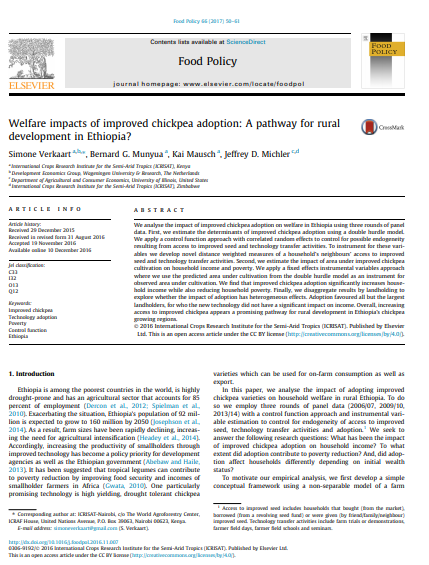Welfare impacts of improved chickpea adoption: A pathway for rural development in Ethiopia?
Summary
We analyze the impact of improved chickpea adoption on welfare in Ethiopia using three rounds of panel data. First, we estimate the determinants of improved chickpea adoption using a double hurdle model. We apply a control function approach with correlated random effects to control for possible endogeneity resulting from access to improved seed and technology transfer activities. To instrumentalize these variables, we develop novel distance weighted measures of a household’s neighbors’ access to improved seed and technology transfer activities. Second, we estimate the impact of area under improved chickpea cultivation on household income and poverty. We apply a fixed effects instrumental variables approach where we use the predicted area under cultivation from the double hurdle model as an instrument for observed area under cultivation. We find that improved chickpea adoption significantly increases household income while also reducing household poverty. Finally, we disaggregate results by landholding to explore whether the impact of adoption has heterogeneous effects. Adoption favored all but the largest landholders, for whom the new technology did not have a significant impact on income. Overall, increasing access to improved chickpea appears to be a promising pathway for rural development in Ethiopia’s chickpea-growing regions.
Open resource Download resource Access resource on external site

